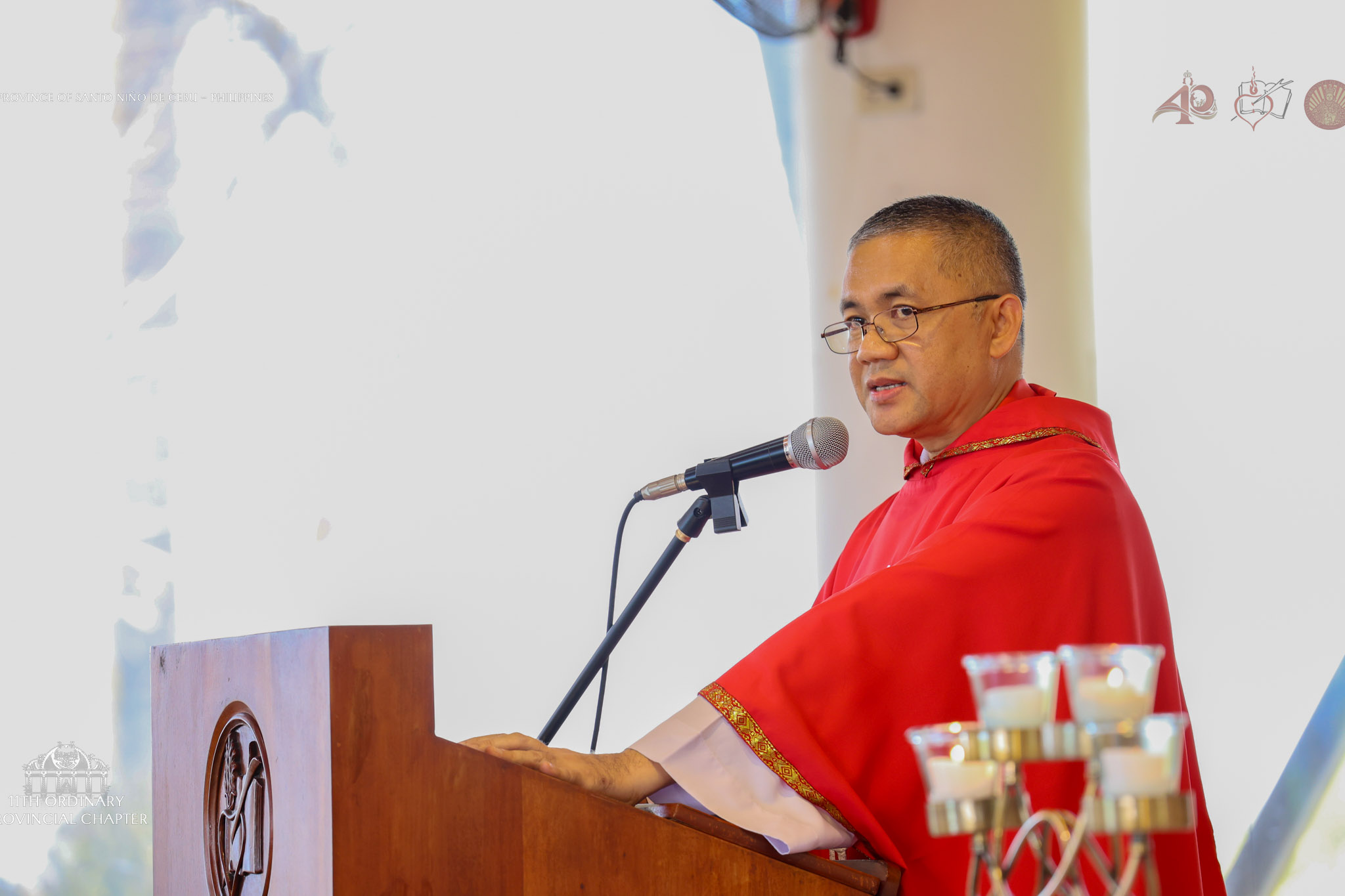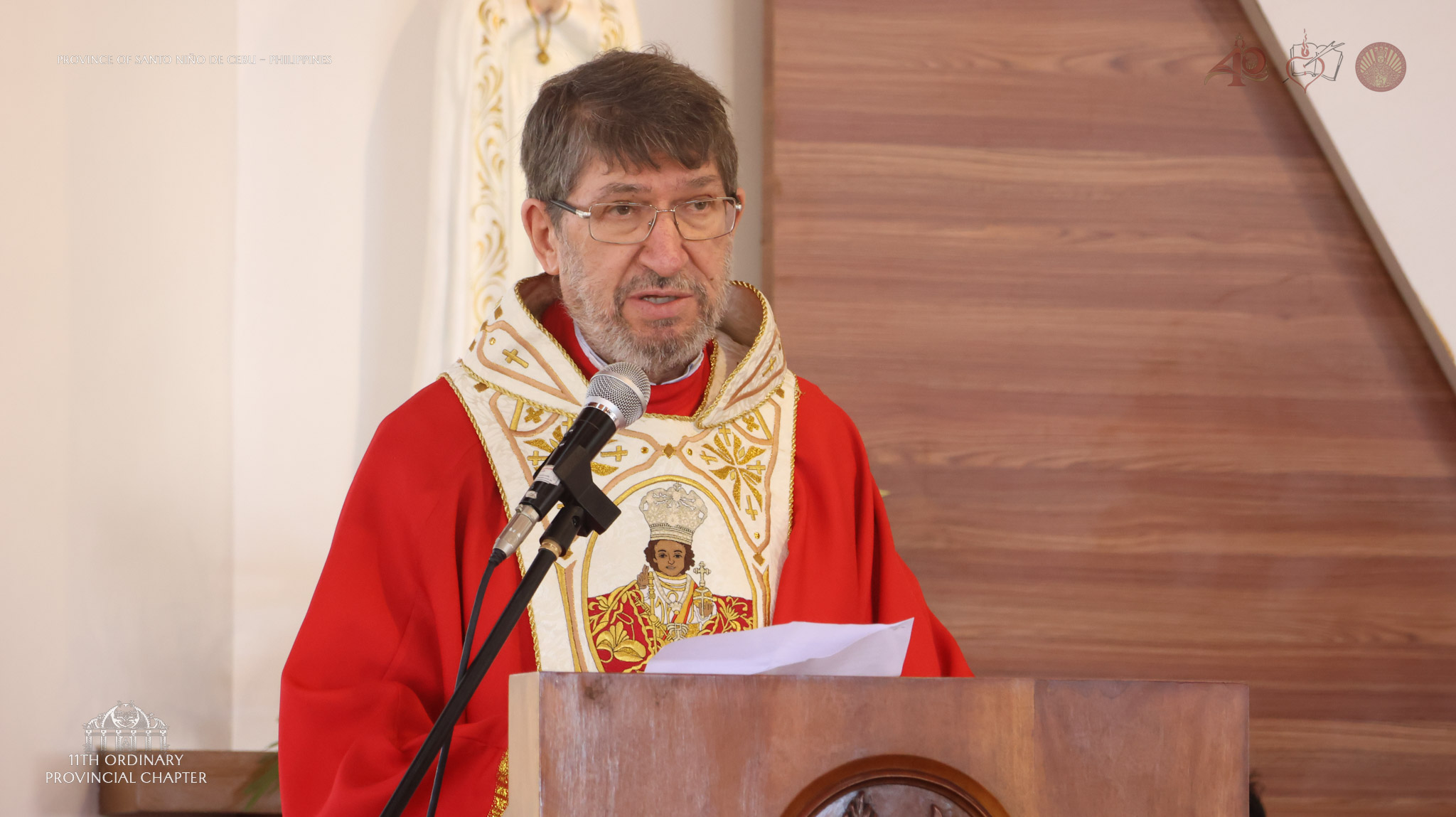(Editor’s Note: This article was published in the souvenir booklet of the Inauguration of the Province of Santo Niño de Cebu – Philippines in 1984, under the main article, “Houses of the Province of Santo Niño de Cebu – Philippines” written by Fr. Policarpio Hernandez, OSA. When the new province was created, 6 institutions were turned over to the Augustinians, which included San Jose Parish and San Jose Catholic School. Other communities or institutions were the University of San Agustin – Iloilo, Colegio San Agustin – Bacolod, Basilica Minore del Santo Niño de Cebu, San Agustin Center of Studies, Nuestra Señora de Gracia Parish-Makati City.)
The first Spaniards set foot in Panay in 1566 while looking for supplies badly needed in Cebu. In the same year, a second expedition came to Panay, this time with Fr. Martin de Rada. He preached the gospel to the natives along the Arout River. Assigned to Panay in 1569, Fr Juan de Alva built the first wooden-chapel in what is today’s Dumangas.
The three-year stint in Cebu, the original base, proved precarious to Miguel Lopez de Legazpi and his men. Hampered by serious food shortage and harassed by Portuguese incursions, the expedition transferred to Panay Island and settled at the mouth of the Banica River, near the town of Pan-ay, Capiz. In 1571, Legazpi moved to Manila, leaving in Pan-ay some people to build a gallery and some soldiers to look after the artillery and supplies left there. From Pan-ay they moved to the Oton-Arevalo area. The Augustinians established their chief mission at Oton, being the first house officially accepted by the pioneering Religious Order in 1572. The nearby estuaries became shipyards and provision posts for later Spanish expeditions to the Moluccas and Mindanao. Gonzalo Ronuillo de Peñalosa decided in 1581 to establish a larger Spanish settlement at Arevalo which he described as an area “where the land is very fertile and the inhabitants are rich.”
Naming it as La Villa de Arevalo, after his hometown in Spain, Ronquillo instituted a Spanish municipal government and designated it as the administrative capital of Panay and Negros. It was the official residence of the alcalde mayor, who was in charge of the government of the province and the overseer-general of the Spanish garrison in the Moluccas.
Inhabitants flocked to the Villa Rica de Arevalo to build their houses. The place soon became one of the best-provisioned districts of all the islands. Oton-Arevalo kept growing.
1602, returning from the Southern outposts, Pedro Bravo de Acuña stayed in Iloilo and ordered a wooden fortress to be built at Punta. Two companies of soldiers were stationed there to protect the people of the neighboring towns against the frequent maraudings of pirates and foreign elements. The population of Iloilo at that time was composed of the said soldiers and some families of fishermen in what is today’s Estanzuela. The “town” was under the civil and ecclesiastical jurisdiction of Arevalo. In 1637, there was a sudden influx of people due to the order of Governor Sebastian Hurtado de Corcuera. While passing through Arevalo in his expedition against Sultan Kudarat, Corcuera issued an order on the second of February asking the people of Arevalo and the Chinese of Parian (Molo) to move to Punta.
Knowing that Punta was an unhabitable place, that they would lose their houses and lands, and thinking of the privileges accorded to them by its founder Ronquillo, the people of Arevalo refused to follow the order. Likewise, its Alcalde Mayor Andres Briones, who at that time was in charge of the province of Oton, so-called until 1790 when the name was changed to Iloilo Province, did nothing to comply with the order. Back from the expedition, Corcuera reiterated the order. This time Dionisio Sarria, the new Alcalde Mayor, followed the order to the letter. As the people were hesitant to move, Sarria, followed by a group of workers with the necessary tools, started demolishing the houses. Thus, many citizens were forced to abandon their beloved town, though some settled not in Punta but in Jaro and neighboring towns. The few Spaniards who remained in Arevalo were asked in 1647 by General Diego de Fajardo to move to Iloilo.
From the beginning, there was a chaplaincy in the Fortress under the care of the secular clergy. Governor Niño de Tavora gave to the Jesuits in 1626, who built a wooden church in Estanzuela. In 1678, they started ministering the Parish (Molo). When in 1768, they were expelled from the Philippines by order of Charles III, the Dominicans took over, and administered only Iloilo. This date, 1768, could be considered as the establishment of Iloilo as an independent town and parish. In 1775, once more Iloilo passed under the care of the secular clergy until 1868.
The Augustinian Bishop of Cebu Santos Gomez Marañon (1829-1840), asked in 1831 to limit the too widely spread territory of his diocese and created a new one in Jaro. The realization of Marañon’s idea took no less than thirty years for the creation of the new diocese. To ease the burden of the bishop of Cebu, Pope Pius IX by his Apostolic Letter Qui ab Initio, May 27, 1865, created the Diocese of Jaro. Jaro was chosen as the seat of the new diocese, “because Jaro, as we have come to learn,” reads the papal document, “is situated on the right bank of the Iloilo River in a wide plain, enjoys a mild and healthy climate;… it is the center of Iloilo Province, and it has flourishing culture and population which numbers already 24,000 inhabitants. Beside, it has a church and a rector big enough to temporarily serve as cathedral and episcopal residence respectively.”
The Augustinians took over Iloilo Parish in 1868 giving in exchange Jaro, which they had ministered to since its beginning in 1584, to be the seat of the new diocese.
Construction of the Church
In the 1840s, Iloilo was still a make shift town built on a shaky foundation, poor and sparsely inhabited. The church – a traveler writes – was not of stone, but of a mixture of brick, wood, and limestones. This church was gutted by fire around the 1850s when the parish priest was Alejo de la Cruz Jalandoni. In 1865, Fr. Leonardo Lazaro, a native of Mandurriao was appointed parish priest. He, with the help of Dn. Manuel Iznart, then governor of the province, started the construction of a new church. It was inaugurated after 20 months of hard work. When the Augustinian Fr. Mauricio Blanco took over in the early 1870s, he started to widen and improve the present church. He built the towers in 1893 and placed a clock in one of them.
In 1912, a strong typhoon destroyed the roof over the choir and caused other damages. Fr. Pedro B. Delgado, with the help of the parishioners, repaired it. From 1922 to 1933, Frs. Domingo Correa and David Casares took pains to make a major repair costing some Php 33,653.00. Engineer Mariano Cacho Soriano directed the work, free of charge. Once more, in 1980-1981, Fr. Gilbert Luis Centina, with the help of some parishioners, remodeled the church. The back walls near the main and side altars as well as the presbyterium were covered with marble from Romblon.
On November 13, 1983, a remodeled sacristy was blessed. The plans were made by Bro. Leonard Jallorina. The present parish priest is Fr. Apolinario Mejorada.
Parochial House
The former parochial house was located on the right side of the church. Fr. Mauricio Blanco started the present one on July 20, 1893 and finished at the end of the following year 1894. At that time – according to newspaper reports – it was one of the best buildings of the city worthy to be the palace of the diocese.
Parochial School
With the development of Iloilo’s port in the last century, people from the province migrated to the city to work as stevedores. With the doldrums suffered by the sugar industry, many a family left their children to roam the streets. Feeling the need to educate those less fortunate children of the Parish, Fr. Manuel Diez Aguado in 1912 established a free school in the first floor of the convent. During the first years it was supported by the Centro Catolico Diocesano of Iloilo.

In later years a group of prominent ladies of the parish, took upon themselves the task to collect and solicit funds for the maintenance of the school. As enrollment increased, Fr. Casimiro Garcia, built in the late 1960s the present bowling alley to generate some income to defray the expenses of the school. In 1970, Fr. Rafael Arguelles, then parish priest of San Jose, constructed the present school buildings.



